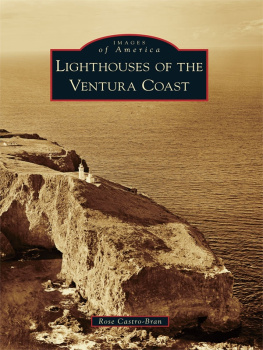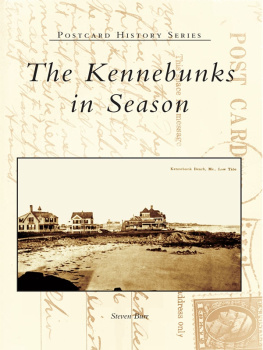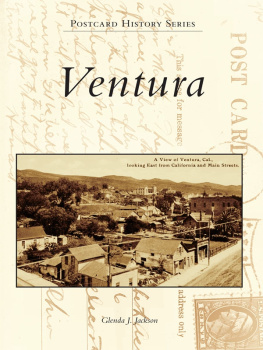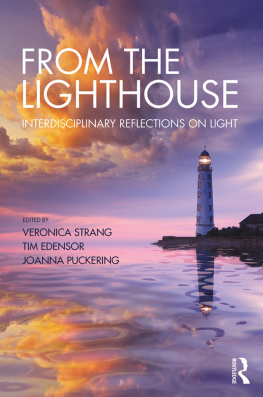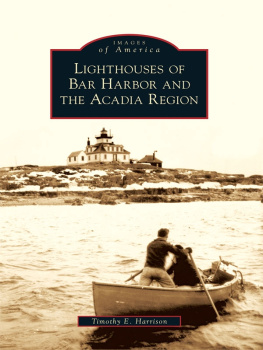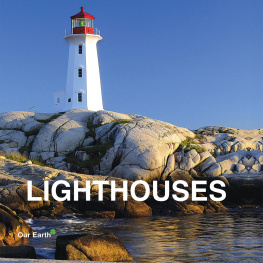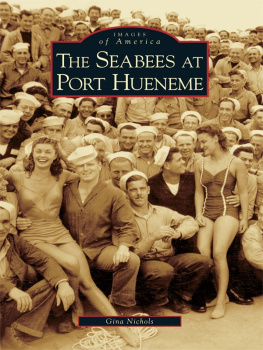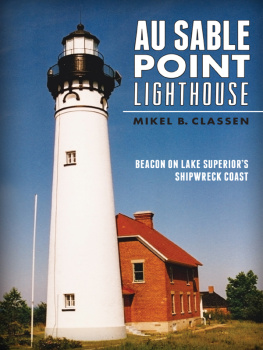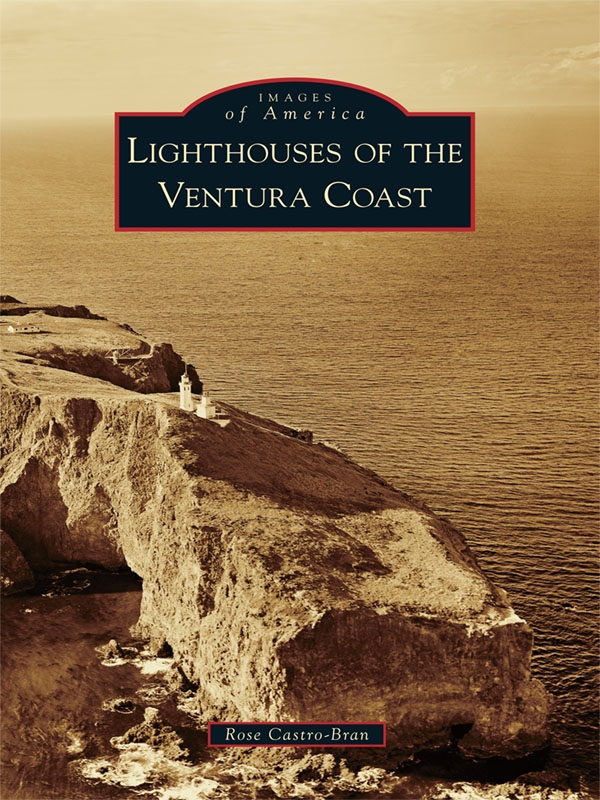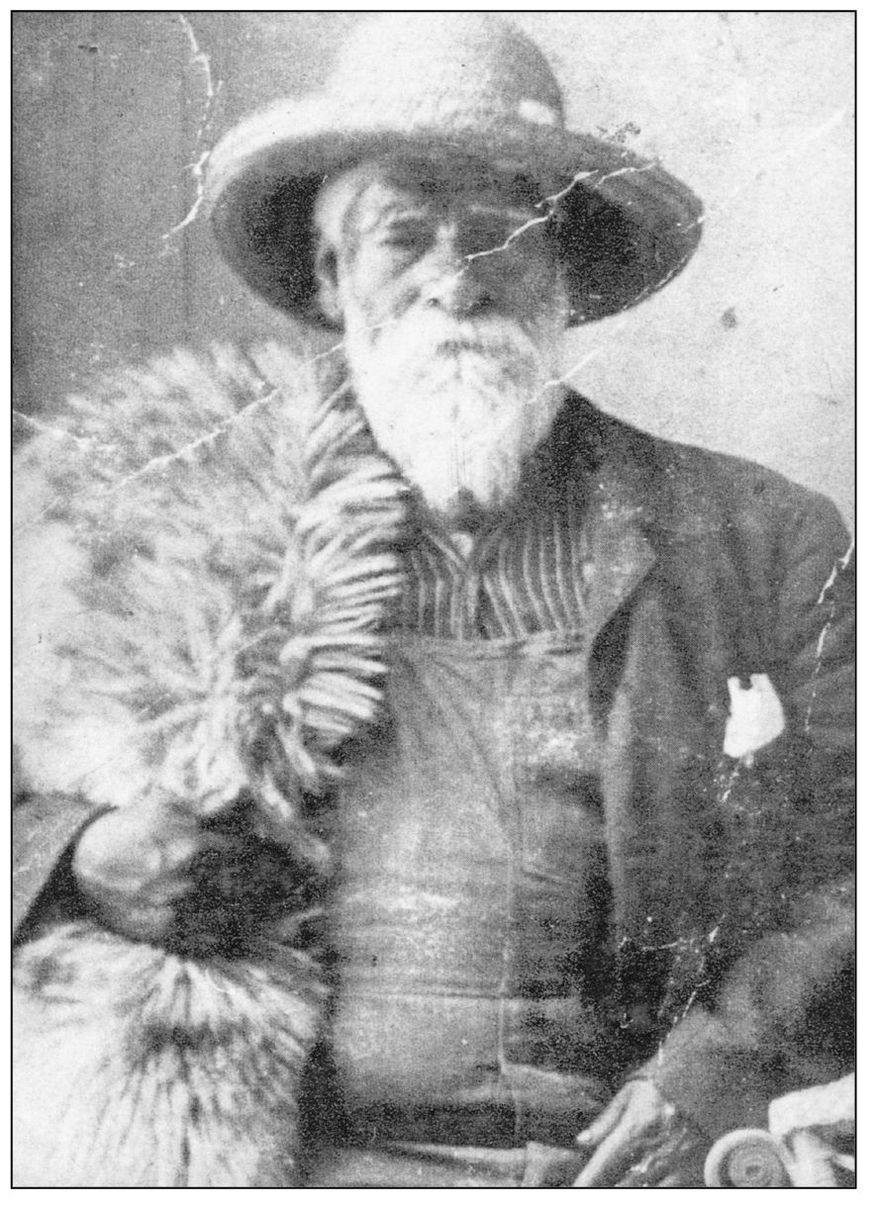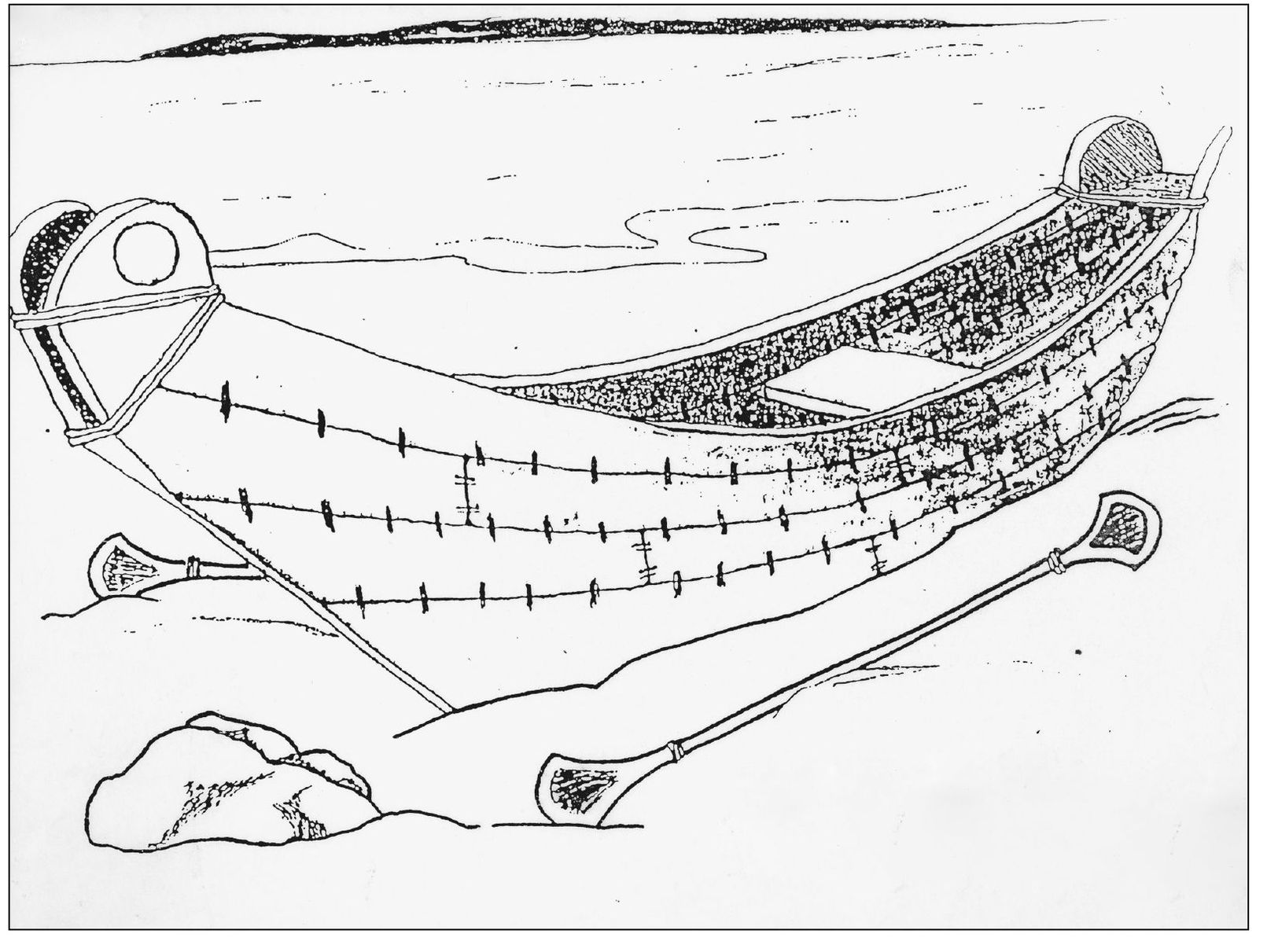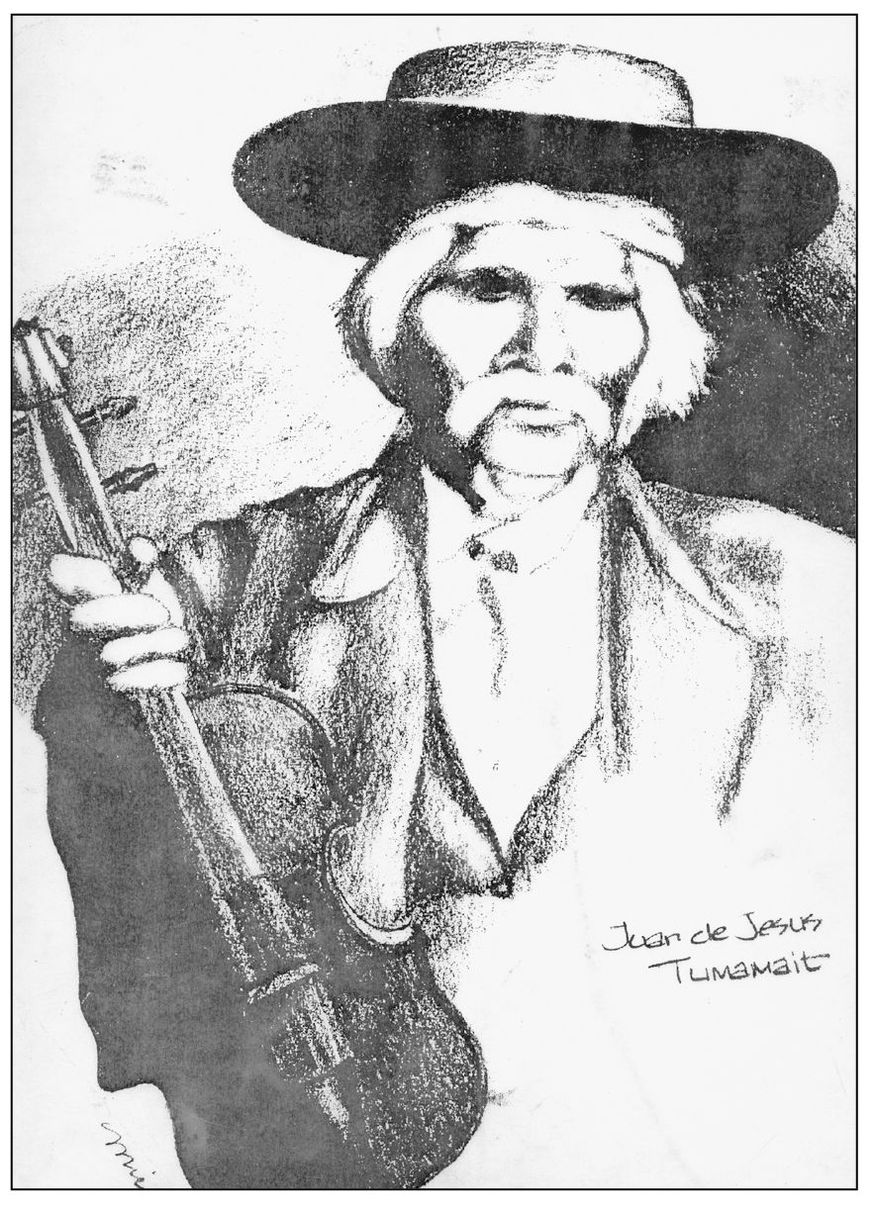This book was only made possible with the generosity and assistance of the following individuals and groups. I would like to thank Charles Johnson of the Ventura County Museum of History and Art; Gina Nichols, archivist for the U.S. Naval Base Ventura County; Dr. David Rosen, U.S. Coast Guard historian; Wayne Wheeler and Jeff and Richard Gales of the U.S. Lighthouse Society; Michael Redmon of the Santa Barbara Museum; the Santa Barbara Special Collections Department; the National Archives; Joyce Carlson, chairperson of the Murals of Santa Paula; Joanna Bard Newton; Georgia Pulos; Ann Thiermann; Michael K. Ward; and Jan Timbrook. Thanks to Anne Hansford and Joe McKenzie of the San Pedro Bay Historical Society and Abra Klinger of Samys Camera.
Many thanks to Lisa Donley of the City of Port Hueneme Parks and Recreation, Kathleen Misewitch of the Port Hueneme Chamber of Commerce, and to Dorothy Ramirez and Helen Brant of the Hueneme Historical Society, not only for their time but for their interesting and hilarious stories. Thank you to Julie Tumamait, whose dedication in her efforts to preserve the traditions and legacies of the Chumash people is an inspiration. Special thanks to Laverne White-Dornberger and Margaret Kellogg-Anderson for keeping the legacies of their fathers alive for generations to come and for their amazing help.
A special thank you to Master Chief Petty Officer John Hurst, U.S. Coast Guard (Ret.), for his entrusting the Point Hueneme Lighthouse to a couple of Auxiliarists to create exhibits and opening it up for tours. Thank you to Eric Castro-Bran, my father-in-law, who has been keeper of Point Vicente Lighthouse for over 18 years, for his expertise, dedication, and love of lighthouses. A heartfelt thank you to the members of the U.S. Coast Guard Aids to Navigation Team Los AngelesLong Beach for their hard work and dedication to duty. Thank you to my husband, Kim, who is my partner in everything I do. Thank you for your endless support and love, and for always being my light in the darkness.
BIBLIOGRAPHY
Gerold, Charles, and Jack C. Miller. Official Souvenir Program. First annual souvenir program, Ventura, CA, November 1112, 1939.
Greenland, Powell M. A Troubled Dream. Los Olivos, CA: Olive Press Publications, 2006.
Holland Jr., Ross H. Americas Lighthouses. New York: Dover Publications, 1927.
Maulhardt, Jeffrey W. Port Hueneme. Charleston, SC: Arcadia Publishing, 2005.
Sonneborn, Liz. The Chumash. Minneapolis, MN: Lerner Publications Company, 2007.
Ward, Thomas C. The Keepers Log . Point Hueneme Lighthouse article, San Francisco, CA, U.S. Lighthouse Society, 1992.
Weymouth, Kent, Powell March Greenland, and Cara Converse. The Journal of Ventura County History . Ventura, CA: Ventura County Historical Society, Museum of Ventura County, 2010.
Wheeler, Wayne. The Keepers Log . Anacapa Island Light Station article, San Francisco, CA, U.S. Lighthouse Society, 2002.
California Lighthouse Life. Charleston, SC: Arcadia Publishing, 2000.
Find more books like this at
www.imagesofamerica.com
Search for your hometown history, your old
stomping grounds, and even your favorite sports team.
One
THE VENTURA COAST DISCOVERY OF NEW LAND
For hundreds of years, the Channel Islands and the coast of the Ventura area in Southern California were populated by the Chumash people, who lived off the land. The fires they set for survival and warmth would have been some of the first navigational aids dotting the California coastline. The Chumash considered the Pacific Ocean their first home and referred to themselves as the first people.
The Chumash numbered in the tens of thousands, and archaeological research demonstrates that they have a deep history in the Santa Barbara Channel and lived along the Southern California coast for millennia. Utilizing the vast resources of the islands, which they referred to as Limuw, the Chumash subsisted on the abundant seafood encompassing the islands and on hunting, as well as mining chert (a type of quartz). They developed specialized crafts and traded among themselves and then with the explorers and those who came after them.
Portuguese navigator Juan Rodriguez Cabrillo is most noted for his exploration of the West Coast of North America as he sailed from Spain in search of new land. Cabrillo was the first European explorer to navigate the coast of present-day California. Cabrillo witnessed the then swamp grassfilled area and was the first to lay anchor and declare San Buenaventura for Spain in 1542.
In 1602, Sebastian Vizcaino led the final Spanish exploration to California and noted on his map the name of Santa Cruz Island as the Isla de Gente Barbuda (island of the bearded people). In 1769, explorer Don Gaspar de la Portola reached Santa Cruz Island accompanied by Fr. Juan Gonzalez Vizcaino and Fr. Francisco Palou and made contact with the native people.
Today Ventura continues to flourish thanks to its natural resources, rich soil, and bustling port. The Channel Islands, on the other hand, have benefited from their lack of development, as these fragile islands have been able to maintain their natural splendor and resources, thanks in part to an act of Congress.
The Chumash Indians were once the largest cultural group in California. Much of their history would have been lost if it wasnt for Fernando Librado. Born in 1839, Librado, a full-blooded Chumash, assisted in relaying the stories and history of his people in 1912 to John P. Harrington. The book Breath of the Sun was the result of this endeavor. (Courtesy Santa Barbara History Museum.)
Librado is also credited with reconstructing a tomol, or canoe, and helping to save the history of this amazing craftsmanship and lost art. The tomol was key to the lifestyle of the Chumash, as they used it to travel up and down the Pacific coast and out to the Channel Islands of Santa Cruz, Santa Rosa, and Anacapa. (Courtesy Jan Timbrook.)
A Chumash man with painted face readies for a special event. The hairpins, nose piercing, and shell beads were indicative of the Chumash heritage. Face painting is an important tradition among Native Americans. Each tribe of Indians has its own unique way of face painting. More than just a beautifying practice, face painting is done on special occasions. The customs are rooted in displaying social acts of distinction and cultural heritage. (Courtesy Michael K. Ward.)
Juan De Jesus Tumamait was born August 29, 1811, in San Buenaventura, California, and died November 8, 1895, in Ventura, California. He was a leader among the Ventureno Chumash in post-mission times. (Courtesy Michael *K. Ward.)

